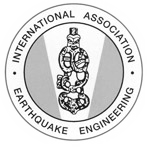Description
Over the last 20 years, beside their primary educational activities, members of the Bridge Chair of the Zagreb Faculty of Civil Engineering Structural Department also worked professionally on main and execution designs of many bridges. Most of them are mid-span to large span bridges, requiring detailed seismic design, especially since their locations are predominantly in highly seismic active regions. These bridges were designed during the transition period from old seismic standards, to ENV pre-standards, and finally to EC8 standards. The evolution of these codes had a great impact on the design. New demands in terms of seismic behaviour influenced all aspects of design, from conceptual design (structural system and material options), sizing of elements, foundation type, bearing and damper layouts, special equipment selection, erection details, to maintenance requirements. An overview of seismic design requirements, solutions, and peculiarities for each of these bridges, which were recently constructed or are currently under construction, is presented in the paper. Since the design of the cable stayed bridge Franjo Tuđman in Dubrovnik, where fluid viscous dampers were first employed in Croatia, to the recent bridge designs, various approaches were utilized to mitigate and take over the seismic actions. Adequate solutions were found either by structural detailing and/or by installation of seismic isolators, depending on bridge structural systems, utilized materials, but also on the characteristics of foundation soil.
| Keywords | bridges, seismic design, seismic behavior, eurocode, seismic isolators, structural detailing |
|---|---|
| DOI | https://doi.org/10.5592/CO/1CroCEE.2021.146 |







